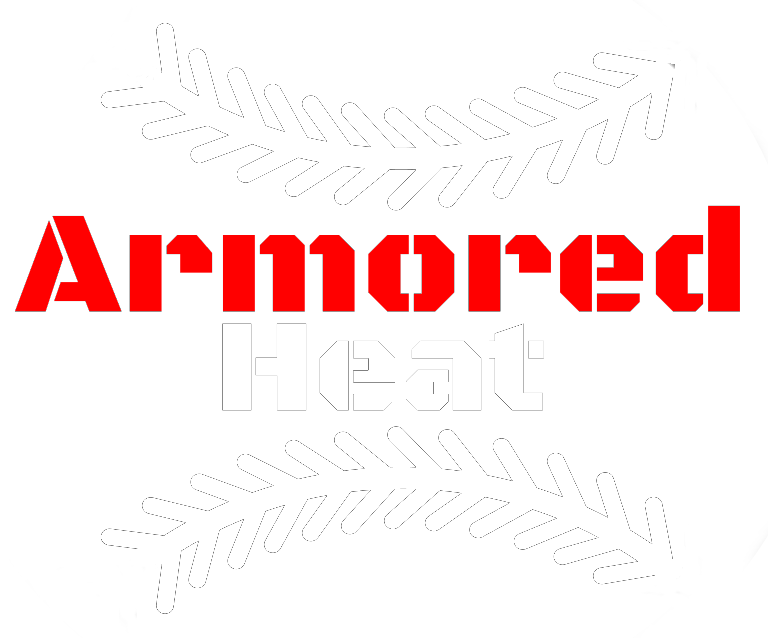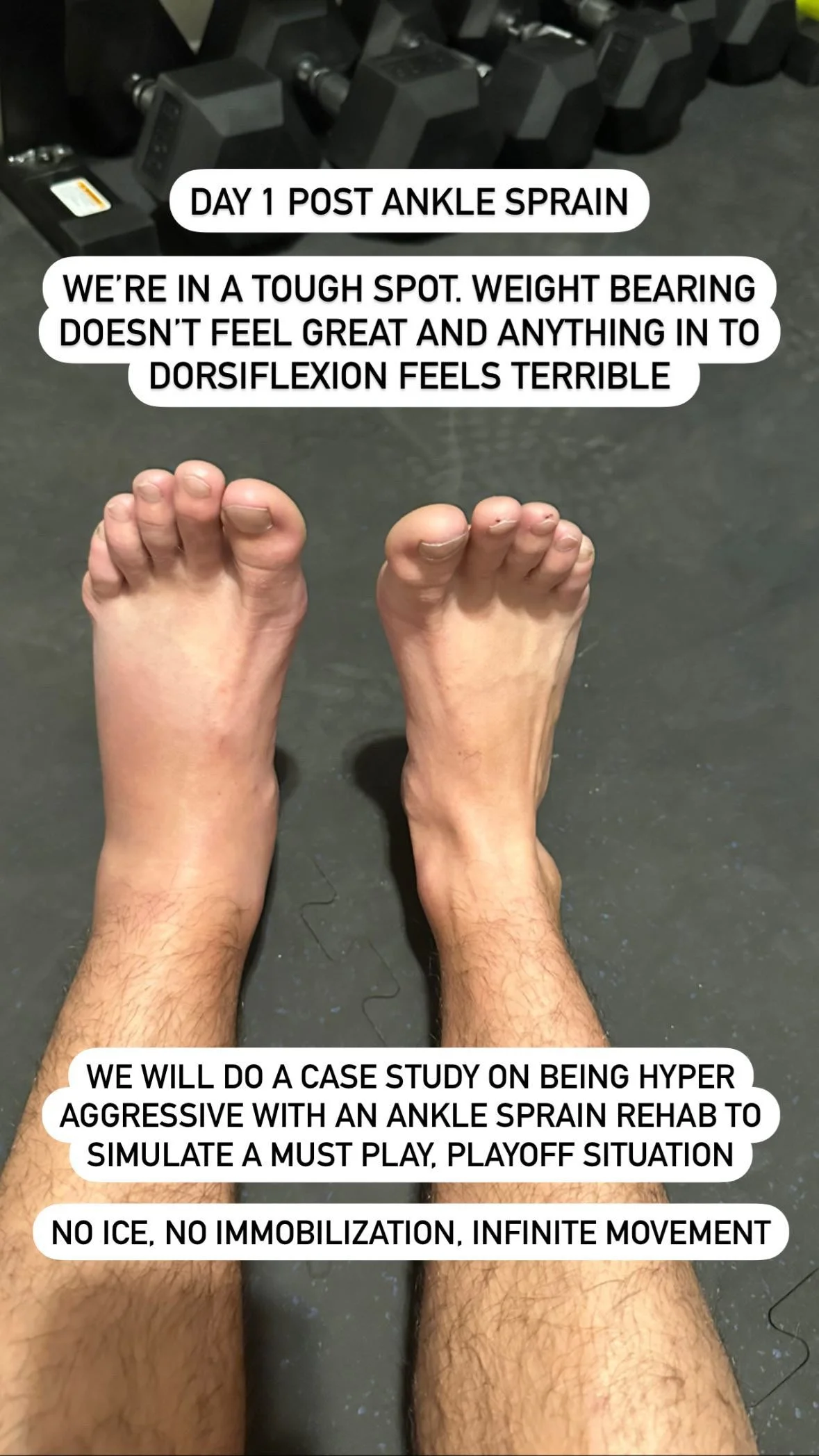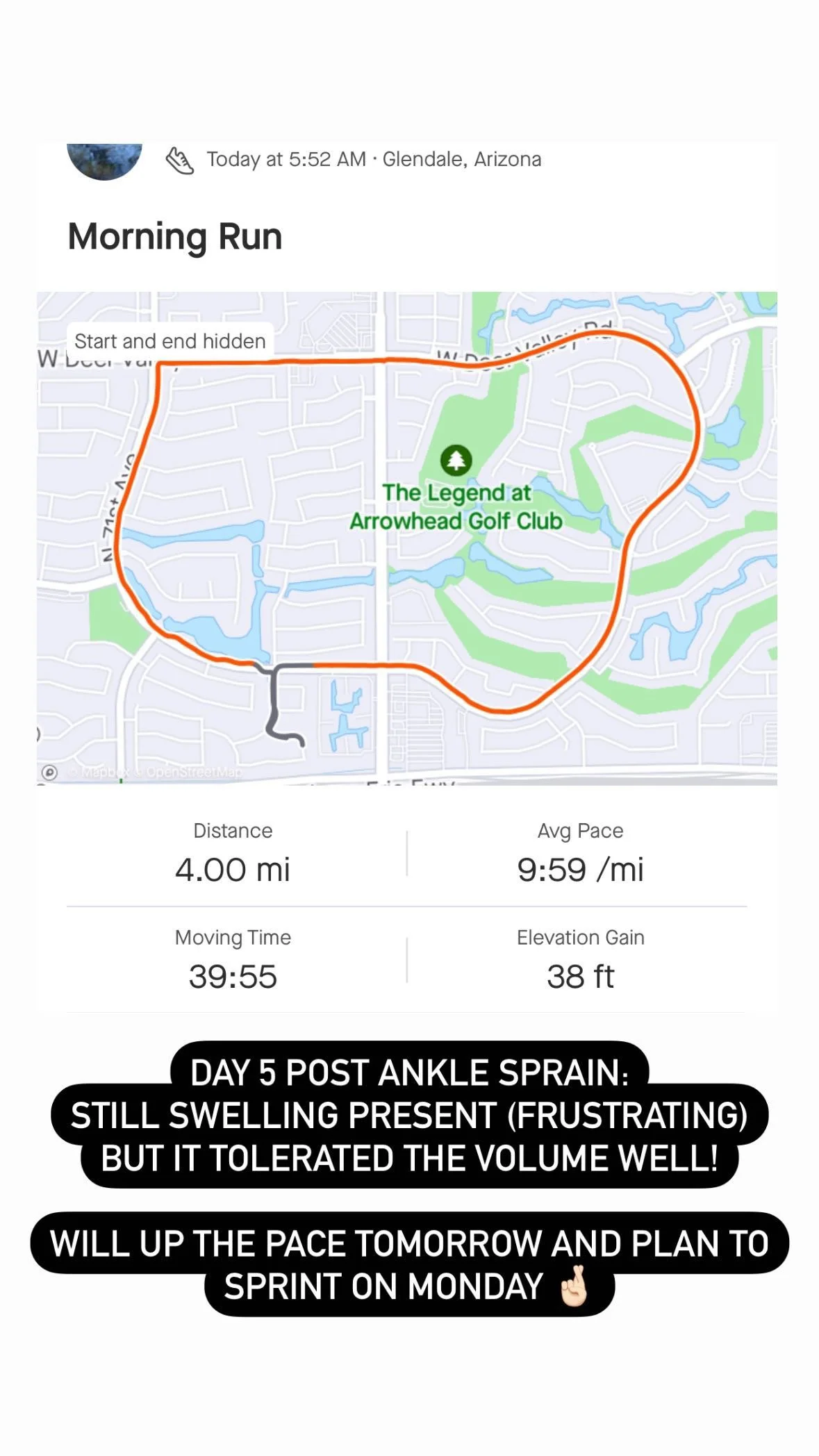Ankle Sprains: Are We Being Too Soft?
Ankle Sprains are one of the most common injuries in all of sports. There are many types of ankle sprains including Lateral Ankle Sprain (ATFL/CF), High Ankle Sprain (less common in baseball), and Deltoid Ligament Sprain being the most common in that order. Since the Lateral Ankle Sprain makes up for over 90% of all ankle sprains, we will focus this article there. Even with all of the advancements in the Sports Medicine world, the early stage rehab for this injury has remained pretty constant using some form of R.I.C.E (Rest, Ice, Compression, Elevation)
After a recent ankle sprain playing Pickleball (Ya, thought about not including the embarrassing mechanism of injury haha), it gave me an opportunity to do a case study on myself and test a theory I have had for some time now which is that a hyper aggressive management of an Isolated Lateral Ankle Sprain would have better outcomes than following the Acute Stage RICE Protocol. My reasoning for this was from seeing patterns in pushing early return of Range of Motion and activity in athlete’s that I was rehabbing was having a strong correlation to a much faster return to play “Norm” of 3-4 weeks for a Grade 2 (ish) ankle sprain and a smoother rehab overall. The fact that it happened to myself allowed me to use a Hyper Aggressive approach without using pain as a guide. Important to note: Ottawa Ankle Rules were negative so there was little concern of Fracture. (Look this up before using an aggressive approach)
THE CASE STUDY
Day of injury (Day 0): Injury happened in the AM and my motto the rest of the day was: No Ice, No Anti inflammatories, and as much tolerable movement as possible. I walked 3 miles (1 mile sessions) that day and it didn’t feel terrible until I sat for 2 hours straight to work.
Day 1: Woke up in the morning feeling terrible! Very swollen. Any attempt at moving into Dorsiflexion and when weight bearing on the Left foot sucked. It made coming down the stairs a journey. The only modality I used in this process was the ARPwave (Direct Current Stem) only using it as a super high stimulus to allow me to tolerate all the ROM (Range of Motion) work I wanted to do. After getting it moving by doing that, it started to feel a little better with active ROM although still very limited in all directions due to the swelling. Day 1 goals were: 1) Evacuate Swelling and 2) 3+ hours of ROM work to improve Dorsiflexion. I achieved the second and would have done a better job of the first if I could do it all again. My wife (also a PT) did some manual lymphatic drainage in the evening, but nothing of long duration
Day 2: All of the ROM Work for day 1 made a huge improvement! Dorsiflexion improvement was pretty unbelievable for one day, but I would say I swung and missed on reducing the swelling (Should have spent more time there). My gait had improved from a limp to a pretty normal walking pattern. Completed Toe walking, heel walking, an upper body lift, 1 mile walk, and a 10 mile bike ride as my workout/rehab.
Day 3: Big Time Progression! Walking felt good, ROM Continues to approach normal. However, there’s still way more swelling present than I would have liked (I think the ultra aggressive approach played into this). After Completing the “Basic Rehab Stuff” - Warm up, ROM work, and isolated stretnghening, I progressed to two foot Pogo’s which surprisingly felt really good, so Ii tried to go out and jog slowly. That wasn’t it and felt horrible every ground contact on the Left foot. One thing of note with this hyper aggressive approach that I don’t often see with typical ankle sprain rehabs is the bruising and swelling made its way all the way into my toes.
Day 4: Continued quick progression in terms of function. Started to incorperation multi-planer and single leg Plyometrics. It was a feeling pretty good, but still a little cranky with more impactful ground contacts. I was able to jog 2 miles, but the first mile was pretty achy when left leg was trail leg and Dorsiflexion was required. 2nd mile felt good.
Day 5-6: Feeling good by this point but super frustrated with my inability to control swelling here. I was able to complete a full Lower Body lift and jog 4 miles at a slow pace. The distance running is obviously not a step in returning to baseball, but it is for part of my daily routine, so hence why is is included here. Continued a lot more Plyometric work at higher intensities. Still frustrated by the amount of swelling present at this point.
Day 7: Felt really good with daily warm up and plyometric work, so I decided to initiate sprinting. Built up to about 80% of max effort. Still a little ginger with the hard ground contacts, but over all felt really good, and felt great the rest of the day.
Day 8: Here’s the full transparency (haha).. I felt good, resumed playing Pickleball and my normal running, then stopped documenting it and never looked back. Continued to feel really good.
NOW, Here’s how that next phase should look if being an athlete was my actual job..
In the final stage, I should have been able to Sprint at max velocity AND continue to progress ground contacts and single leg landing to where there was no compensation between sides prior to returning to sport.
MY TAKEAWAY
So all this to say, maybe R.I.C.E isn’t the answer to MOST acute stage injury rehabs.
My biggest takeaway other than the quick turnaround for a pretty significant Ankle sprain, was that I was unable to mange the swelling on myself as well as I usually can for athletes and I think this is a 2 fold reason:
1) I typically spend far greater time with them performing manual lymphatic drainage (aggressively) than I did on myself
2) The over aggressive route I took likely kept producing more and more swelling throughout the process as I was really pushing through a lot of discomfort to move at that pace
If I could do this case study again and start to zero in on the most Ideal pace to push the rehab, I think I would let swelling guide the progression. I would only be aggressive to the extent that I could manage the swelling. I really think that it may have pushed back the progression only a couple days, but it would have been a much better transition back to sport as I was still favoring it a little at that point, but thats why we do these to start to zero in on what is the ideal speed/rehab plan.
**This is not medical advice or reccomendation





